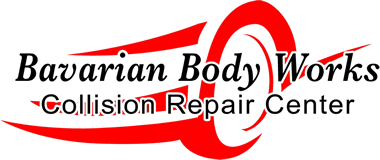Navigating the Auto Insurance Claims Process
After an accident, you likely want to have your vehicle repaired—and repaired to your standards—as quickly as possible. But first, you’ll have to navigate the insurance claims process. Depending on your coverage, your vehicle and whether you were at fault, this can look different for every driver. Still, there are some helpful things to know before that first call to your insurer.
Be prepared
It’s always smart to periodically check in on your insurance coverage levels and be sure they’re in line with your needs. Is your deductible manageable, or does it make sense to lower it some by paying more on your premium? Are you covered in the event of a hit-and-run or accident with an uninsured driver? Do you have rental reimbursement? Asking yourself these questions before an accident will ensure you limit unpleasant surprises in your later conversations with your insurer.
If you already have a trusted auto repair shop, keep their number and address in your vehicle. If your car requires a tow from the crash site, you may be able to send it directly to the shop, avoiding an extra tow.
Contact your insurer
After a crash, you always want to call 911 and seek the medical attention you may need. While it’s helpful to document the crash site with photos and notes, your health and safety should take priority. Be sure the police create an accident report, as this will be helpful during the insurance claims process for determining fault.
Once you’re home, reach out to your insurer if you plan to file a claim. Sometimes it’s helpful to first speak with your insurance agent to determine if that’s the right move. If the damage is minor, repairs might cost less than your deductible. If they’re just slightly more, you’ll have to weigh whether the possible increase in your premium is worth it.
Wait for the claim to be processed
After you contact your insurer, a claims adjuster will investigate your claim. This starts with a policy review—again, being proactive about your insurance coverage avoids surprises here. The insurance company will also investigate the accident, drawing on the police report, statements from you and the other driver and witness statements. To estimate the extent of the damage, they’ll send someone out to evaluate your vehicle. If you have rental reimbursement coverage, the insurance company should also help arrange a rental for you.
When you’re not at fault in an accident, you’ll likely deal with the other driver’s insurance company, following a similar process. If the other driver was uninsured or underinsured, however, you’ll still be dealing with your own insurer.
Get a quote
Next, it’s time to get a quote on repairs from a body shop. Often, the insurance company will suggest a preferred shop or network of shops. Remember that these are just suggestions. You have the right to choose your own shop. Your goals might not always line up with the insurer’s goals. They want to keep costs down. You want your vehicle to be safe and returned to pre-accident condition.
Have your car repaired
If all goes well, the insurance company then issues a check and you authorize the body shop to begin repairs, covering the deductible yourself. Reputable body shops will understand the claims process and have experience working with most major insurers.
If you need to bring your car in for an estimate, contact Bavarian Body Works today.
Our trained technicians can assess your vehicle’s damage and provide an estimate on repairs. We’ve worked with all major insurers and understand how the process works. Contact us today for more information.
